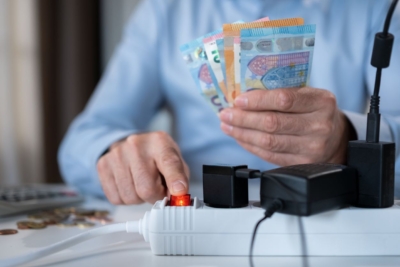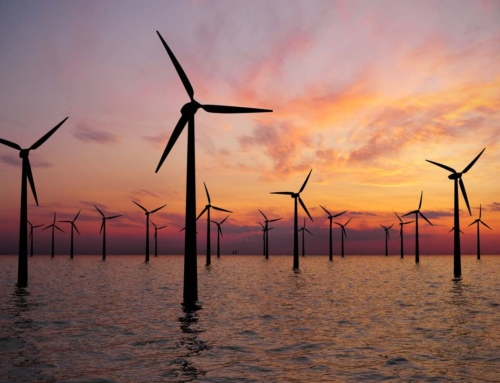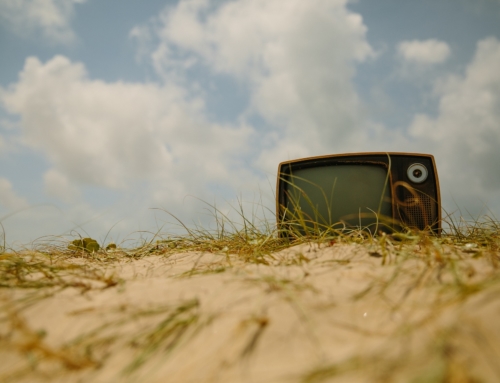There is nothing worse than getting a bill in the mail and not being able to clearly tell where your money is going. Let’s pick some things apart and learn how most electricity bills work.
What an Electric Bill Looks Like
Electric bills generally contain notations for:
- A billing period
- Your energy consumption
- Your list of charges
Here are some of the items you might see and a simple explanation of what your payment amount provides. If you get stuck, many electricity suppliers include a list of terms with their bills to help you determine what you have been charged for.
Billing Period
Most electric companies send out their bills once a month. This portion of your bill will most often be for 28-31 days just before you receive the bill.
Total Consumption
Your electricity use is measured with a meter box. This meter is generally located on an exterior wall of your home and has a counter that ticks up as your home uses electricity. Older meters may require someone to stop by your meter each month to read the change in numbers. Other meters communicate directly with the power company.
When you find the part of your electricity bill labeled “Total Consumption,” it indicates how many units of electricity (kWH or kilowatt hours) your home used during the month. You will be charged a certain amount for every unit used.
This portion of your bill may have one more notation. It may include words like actual and estimated. This tells you how the company determined the number of units you used.
Actual
An actual reading means that the electric provider verified the meter number on your home. In some cases, the customer can also report this reading.
Estimated
For various reasons, your electric company may occasionally estimate your total electricity usage based on your past bills. If an estimate is used, they will still come out to get your actual meter reading every few months.
Adjustment
When the power company verifies your meter reading after an estimated month, you might find the next bill to be higher or lower than expected as they make a billing adjustment to rebalance their estimates.
Charges
On the simplest electricity bills, you will see two charge categories. One is your supply cost. All other parts of your charges may be grouped together in a category of delivery charges. These items will be listed in smaller parts on more detailed bills.
Electricity Supply Cost
This is the direct cost of the electricity you use. This number is listed in kWh used (total consumption). It is then multiplied by the cost per kWh charged by your electricity supplier. The average rate for the United States is about $0.17 per unit.
*These rates can vary greatly depending on where you live. Your actual rate and all other charges are determined by your electricity provider or are part of structured tariff rates.
Delivery and Distribution
This fee covers all the equipment, processes, and people it takes to transfer electricity to your home.
Distribution includes:
- Transmission Charge: This covers the equipment and materials needed to move electricity from the power plant to your local distributor.
- Distribution, Operations, and Service Charges: These charges take care of the equipment, labor, customer service, and more that go into the final delivery from your provider to your home.
- Public Policy Charges: These funds are used to invest in law-mandated energy conservation efforts and environmental protection, such as renewable energy sources.
Taxes
Any local, state, or federal taxes you pay will also have their own line item and charge formula based on where you live.
How Electricity Suppliers Charge Their Customers
There are several different ways an electricity supplier can charge its customers for the amount of electricity they use.
Flat Rates
A flat billing rate means the power company looks at the total amount of electricity you use and charges the same amount for every unit.
Time-of-Use Rates
With this billing method, the amount of money you pay for your electricity can change depending on the time of day you use it.
You will be charged more for what you use during “peak” times of the day when everyone is using a lot of electricity. Think of it as rush hour for your power plant. It takes a little more work to ensure everyone gets the electricity they need.
Tiered Rates
A tiered rate billing system means that the electricity provider has predetermined levels of electric usage. There will be a basic level that is charged at the lowest rate. If you go over that level, they can charge you more. There may be several tiered levels for rate charges. It’s similar to going over the amount of data you paid for on your cell phone.
Demand-Based Pricing
This is often an additional fee similar to time-of-use rates. The electric company looks for the time of day and length of time you use the most electricity. They then charge you a higher rate for that portion.
What Appliances Use the Most Electricity
Of course, the next important question is: What runs your electric bill up the most?
The biggest power hog in most homes is air conditioning. Other culprits are your water heater, refrigerator, and other large appliances.
Simple Ways to Save Money on Your Electric Bill
- Make sure your home is well insulated.
- Use a smart thermostat to ensure you aren’t wasting electricity when you aren’t home.
- Use ceiling fans to help keep cool without turning down the thermostat.
- Switch to LED and energy-saving light bulbs.
- Unplug unused appliances, game systems, and other devices.
- Turn off the lights when you don’t need them.
- Do your laundry in full batches rather than small, frequent batches.
- Try a drying rack or clothesline.
- Use motion-activated lighting outdoors.
Visit our blog on energy-saving tips for more useful information.
Explore your options with Spring Power & Gas. Enroll today!






